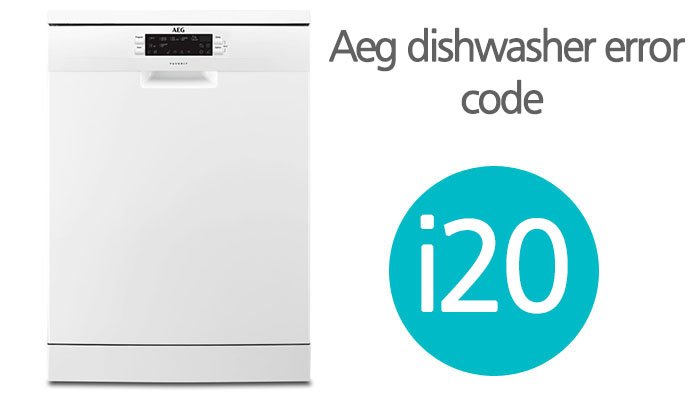
The heart of a modern kitchen, a dishwasher, has become a vital household appliance. One renowned brand producing efficient dishwashers is AEG. While AEG appliances are known for their high-quality standards and innovative technology, occasional hitches can occur, and these can often be displayed as error codes on your machine. One such prevalent error is the i20 error code, and understanding how to diagnose and resolve this problem is essential for all AEG dishwasher owners.
The i20 error code on an AEG dishwasher indicates an issue with the draining system, pointing towards a problem either with the pump, filter, or drain hose. The dishwasher’s control system triggers this error when it detects a failure to drain water within a specific time limit. In simpler terms, the dishwasher senses that it’s not emptying water as quickly as it should, which raises an alarm for a potential issue.
Identifying the problem is the first step towards resolving it. Here are the most common reasons why your AEG dishwasher might be showing an i20 error:
- Blocked filters: Over time, food remnants and debris can accumulate in the filters, resulting in blockages. If the filter is clogged, it can impede water flow, causing the dishwasher to fail in draining water properly.
- Drain pump malfunction: The drain pump plays a crucial role in flushing out the used water. If the pump fails or gets obstructed by a foreign object, it could hinder the water drainage process.
- Obstructed drain hose: If the drain hose is bent, kinked, or blocked, it could prevent the water from exiting the dishwasher.
- Faulty pressure sensor: The pressure sensor monitors the water level in the dishwasher. If it is faulty, it might inaccurately identify a drainage problem, resulting in the i20 error code.
Now that you understand the possible reasons behind the i20 error code, let’s delve into ways you can fix this issue:
- Inspect and clean the filters: Remove the filters from the bottom of the dishwasher. Clean them thoroughly under running water, using a soft brush to remove any debris. After they are clean and dry, replace them correctly.
- Check the drain pump: Ensure that the pump isn’t blocked by debris or any foreign objects. Always disconnect the dishwasher from the mains before doing any repair work. You can access the drain pump from underneath the machine or through the front, depending on your model.
- Examine the drain hose: Make sure the hose isn’t kinked or bent. If there’s a blockage, try flushing it out with water. If the hose is damaged, it will need replacing.
- Check the pressure sensor: You might need a service technician for this task, as checking or replacing a pressure sensor requires technical knowledge and experience.
Remember, if you are unsure about performing these tasks yourself, it’s always recommended to call a professional. Untrained repair attempts could lead to more severe damage or potentially void your warranty.
Finally, prevention is the best cure. Regular maintenance of your AEG dishwasher can prevent errors like i20. Ensure to clean the filters regularly, check the drain hose for kinks, and avoid overloading the dishwasher. In case of repetitive i20 error codes, it might indicate a more serious issue requiring a service call.
In summary, the i20 error code on your AEG dishwasher signifies a drainage problem. By identifying and addressing the issue — be it a blocked filter, malfunctioning drain pump, obstructed drain hose, or a faulty pressure sensor — you can efficiently resolve this error. Ensure to follow regular maintenance schedules and opt for professional help when needed, guaranteeing the longevity of your AEG dishwasher. This way, you can ensure a well-functioning appliance that serves your kitchen reliably for many years.
